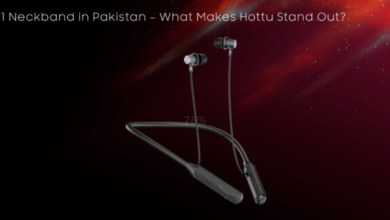Automating Customer Journeys: Driving Efficiency and Conversions with Smart Triggers

Today’s businesses face mounting pressure to deliver personalized experiences at a large scale. Manual customer engagement processes drain resources and often miss crucial touchpoints. Smart automation addresses these challenges by creating systematic approaches to customer interaction. Organizations that fail to automate risk losing customers to competitors who respond faster and more consistently.
Modern customer data management platform solutions enable businesses to create sophisticated trigger-based workflows that respond to user behavior in real-time. These systems track customer actions and automatically deliver relevant messages when engagement potential peaks. The technology transforms scattered customer interactions into cohesive journeys. Businesses using these platforms report significant improvements in conversion rates and customer satisfaction scores.
Understanding Customer Journey Automation
Behavioral Trigger Systems: Customer journey automation relies on predefined rules that get activated when specific conditions are met. These triggers monitor user actions like website visits, email opens, or purchase behaviors. The system then initiates appropriate responses without manual intervention. This approach ensures no customer interaction goes unnoticed or unaddressed.
Real-Time Response Capabilities: Automation platforms process customer data instantly to deliver timely communications. When a customer abandons their shopping cart, the system can trigger a recovery email within minutes. This immediate response significantly increases the likelihood of conversion. Delayed responses often result in lost sales opportunities and frustrated customers.
Building Effective Automation Workflows
Segmentation and Personalization: Successful automation starts with proper customer segmentation based on demographics, behavior, and preferences. Each segment receives tailored messaging that resonates with their specific needs and interests. The system adjusts content dynamically based on available customer data. Generic messaging fails to engage modern consumers who expect personalized experiences.
Multi-Channel Integration: Effective automation spans multiple communication channels including email, SMS, push notifications, and social media. Customers receive consistent messaging regardless of their preferred communication method. The system coordinates timing across channels to avoid overwhelming recipients. This approach creates a unified brand experience that builds trust and recognition.
See also: Building a Home Office: Essential Tech Tools for Remote Work
Essential Automation Components
Trigger Configuration: Setting up effective triggers requires careful analysis of customer behavior patterns. The most successful triggers align with natural customer decision-making processes. Common triggers include:
- Welcome series activation when customers subscribe or register
- Abandoned cart recovery sequences triggered 1-3 hours after abandonment
- Birthday or anniversary messages sent on special dates
- Re-engagement campaigns activated after periods of inactivity
- Product recommendations based on browsing or purchase history
Message Timing and Frequency: Automation systems allow precise control over message timing and frequency to optimize engagement. The platform can delay messages based on recipient time zones or previous interaction patterns. This prevents message fatigue while maintaining consistent communication. Poor timing can turn helpful automation into annoying spam.
Advanced Automation Strategies
Dynamic Content Personalization: Modern automation platforms can modify message content based on individual customer profiles and real-time data. Product recommendations change based on browsing history, weather conditions, or seasonal preferences. The system learns from customer responses to improve future messaging. This level of personalization was impossible with traditional marketing approaches.
Predictive Analytics Integration: Advanced systems use machine learning to predict customer behavior and optimize automation rules. The platform identifies customers likely to churn and triggers retention campaigns proactively. These predictive capabilities help businesses stay ahead of customer needs. Companies using predictive automation report 25-40% improvements in customer retention rates.
Measuring Automation Success
Key Performance Indicators: Tracking automation effectiveness requires monitoring specific metrics that align with business objectives. Open rates, click-through rates, and conversion percentages provide insights into message performance. Customer lifetime value and retention rates indicate long-term automation impact. Regular analysis helps identify opportunities for optimization and improvement.
Continuous Optimization: Successful automation requires ongoing refinement based on performance data and customer feedback. A/B testing different message versions reveals what resonates with specific audience segments. The system should evolve as customer preferences and market conditions change. Static automation becomes less effective over time as customer expectations shift.
Overcoming Common Automation Challenges
Data Quality Management: Automation effectiveness depends heavily on accurate customer data. Outdated or incorrect information leads to irrelevant messaging and poor customer experiences. Regular data cleaning and validation processes ensure automation systems operate with reliable information. Poor data quality can destroy customer relationships and damage brand reputation.
Balancing Automation and Human Touch: While automation handles routine interactions efficiently, certain situations require human intervention. The system should recognize when to escalate issues to human agents. This hybrid approach combines automation efficiency with human empathy and problem-solving abilities. Over-automation can make customers feel undervalued and disconnected from the brand.
Conclusion
Smart automation transforms customer engagement from reactive to proactive, creating opportunities for deeper relationships and increased conversions. The technology enables businesses to deliver personalized experiences at scale while reducing operational costs and improving response times. Companies that embrace automation gain competitive advantages through consistent, timely, and relevant customer communications.
Start implementing automated customer journey workflows today to capture more conversions and build stronger customer relationships. Focus on trigger-based messaging that responds to actual customer behavior rather than generic broadcast campaigns.





